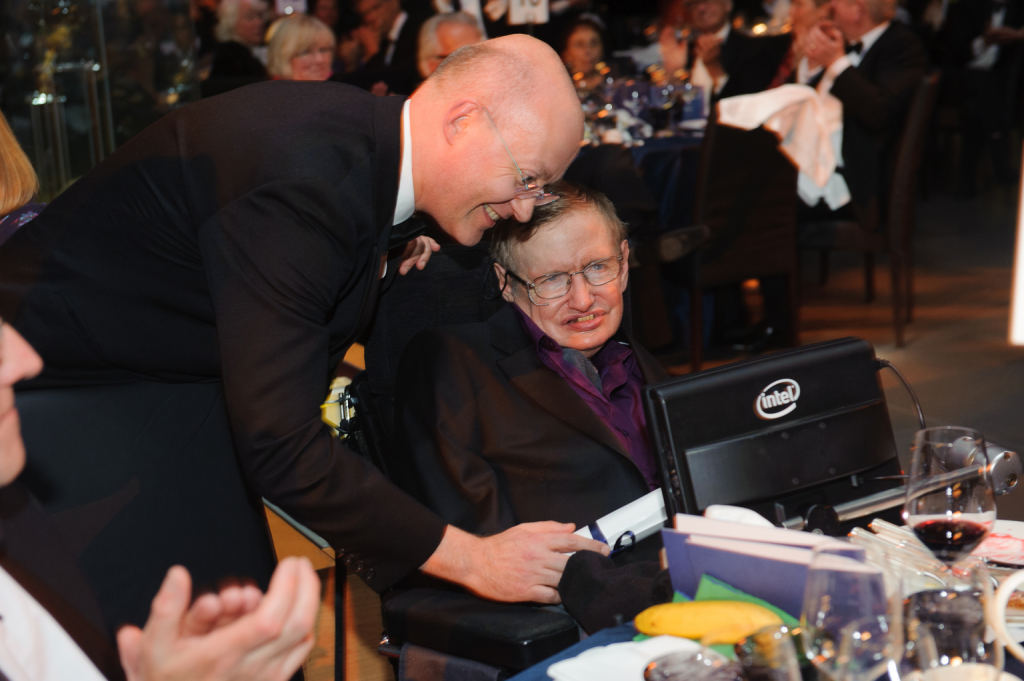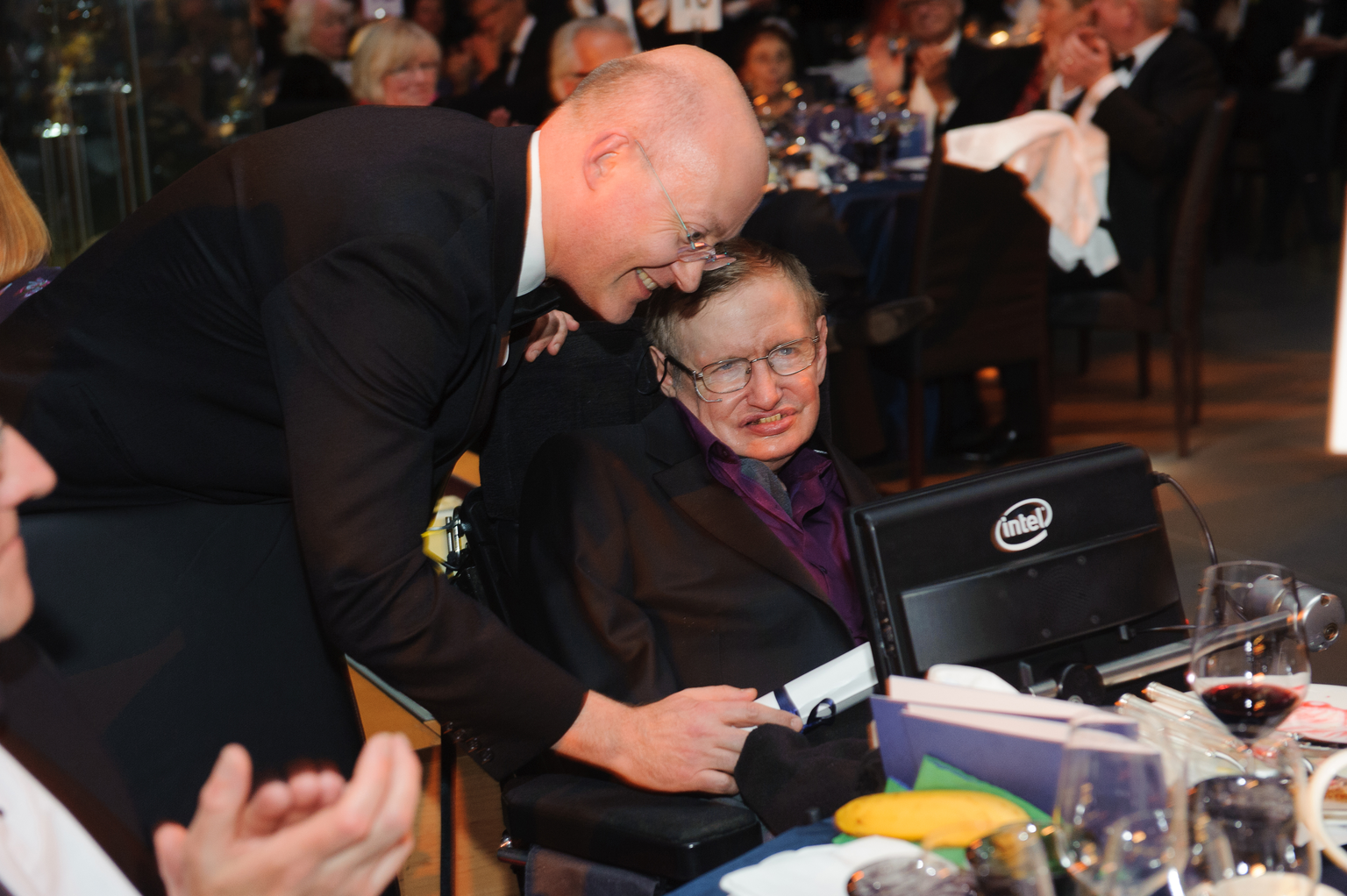The awards, which are made to individuals who have had an exceptional influence on modern culture, reflect Prof Hawking’s pioneering research on quantum gravity and his remarkable success in popularising cosmology, notably with A Brief History of Time, as celebrated by an exhibition at the Museum earlier this year.

In the case of Prof Heuer, the fellowship honours his position as the Director General of CERN, in Geneva, where he leads an army of 10,000 scientists and engineers who work in the greatest intellectual adventure on the planet, the Large Hadron Collider.
The awards, which culminated in a standing ovation for Prof Hawking, were made before an audience of more than 400 at the Annual Dinner of the Science Museum by the Chairman of the Board of Trustees, Douglas Gurr, and handed to them by the Director of the Science Museum Group, and of the Museum itself, Ian Blatchford.
Among the black-tie audience was Nobel laureate and Museum Fellow Sir Tim Hunt, Science Minister David Willetts, former Directors Sir Neil Cossons and Prof Chris Rapley, Trustee Janet Street-Porter, biographers Graham Farmelo and Tom Bower, comedian John Sessions and TV presenters Adam Rutherford, Gia Milinovich and Samira Ahmed.
The Science Museum is working with CERN to create a touring temporary exhibition that will open in London in Autumn 2013 and allow visitors to experience what it feels like to operate the biggest scientific experiment on the planet, the Large Hadron Collider (LHC).
‘The Science Museum is among the world’s leading centres for public engagement with science,’ said Heuer, who made a passionate speech about the role the LHC can play in helping to reengage society in this science-dominated age. ‘I’m very pleased for CERN to be working with the museum on this important new touring exhibition about the LHC.’”
In the LHC, a giant particle collider, scientists, and engineers work at the extremes of temperature, vacuum and energy to recreate conditions not seen since just after the Big Bang some 13.7 billion years ago. The museum is collaborating with theatre and digital producers to create an immersive experience and give visitors a close-up look at remarkable examples of the collider’s engineering, from the bottle of hydrogen gas that feeds the great machine to its vast and powerful magnets.
The exhibition will feature many historic objects from the Museum’s world-leading collections, including JJ Thomson’s apparatus which led to the discovery of the electron, and the accelerator Cockcroft and Walton used to first split the atom. The project team for the CERN exhibit includes Harry Cliff, the first Science Museum Fellow of Modern Science, who divides his time between the museum and the University of Cambridge team working on the LHCb experiment at CERN.
In his speech to the audience, Ian Blatchford highlighted how, as annual visitor numbers have risen to almost 3 million, the museum is extending its collaborations, not just with CERN and Cambridge but with Imperial College London and the space community too; the museum recently hosted the 50th anniversary of Ariel 1 the first international space mission, and is planning a major exhibition on Soviet-era cosmonauts.
He added that there is also a new emphasis in the museum on collaborations with the arts, from its latest exhibition on the symbolism of alchemy to a forthcoming collaboration with the Philharmonia and next year’s Media Space gallery, a partnership with the National Media Museum in Bradford which will focus on visual media.
The museum is evolving. It recently received an award of £6 million from the Heritage Lottery Fund (HLF) for a 2014 gallery which will tell the story of two centuries of innovation in communication technology. With the forthcoming Media Space Project, the new gallery represents a key step in the delivery of the museum’s Master Plan.
